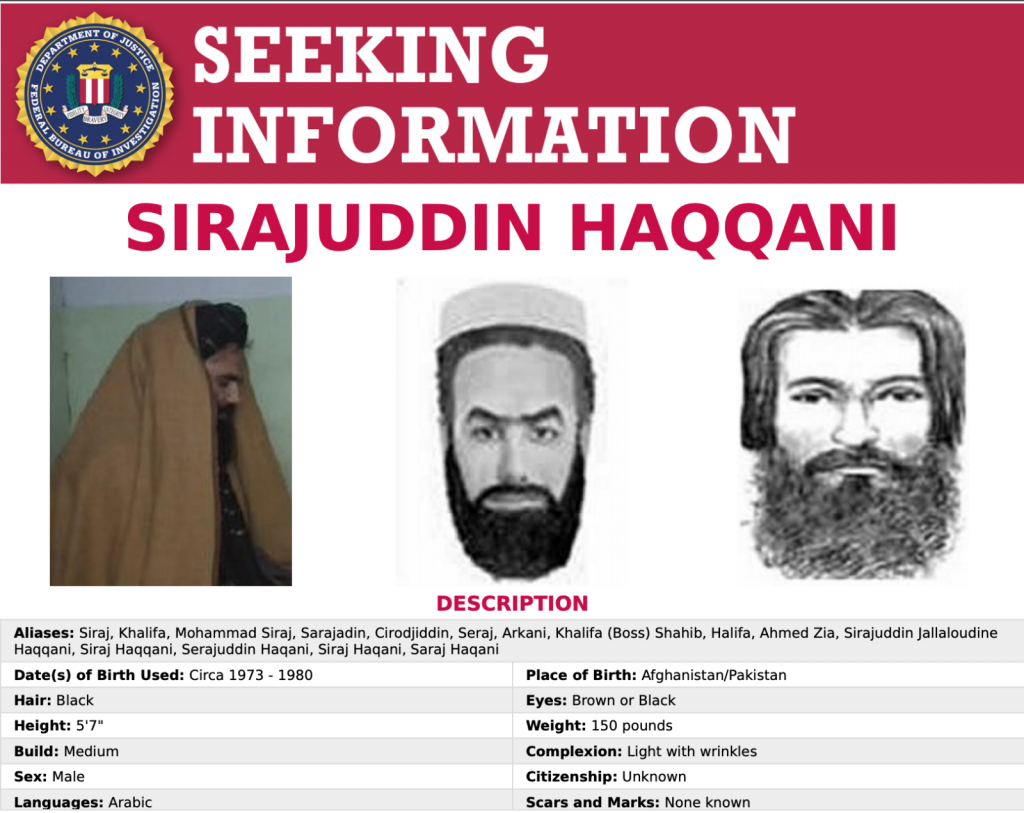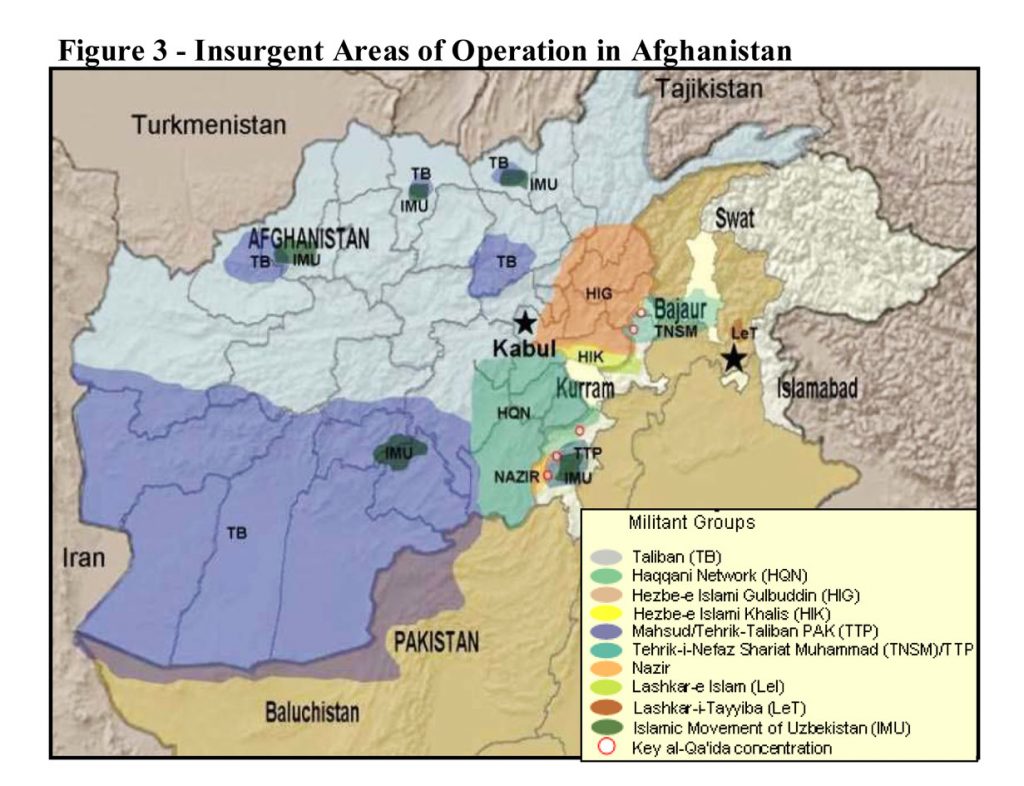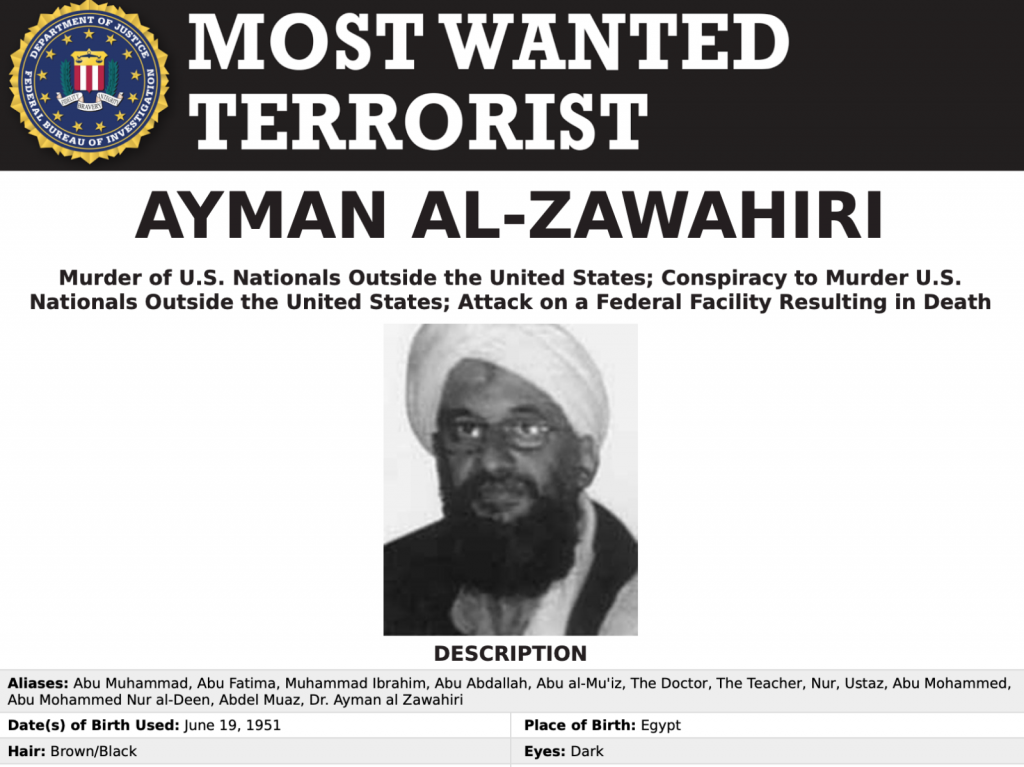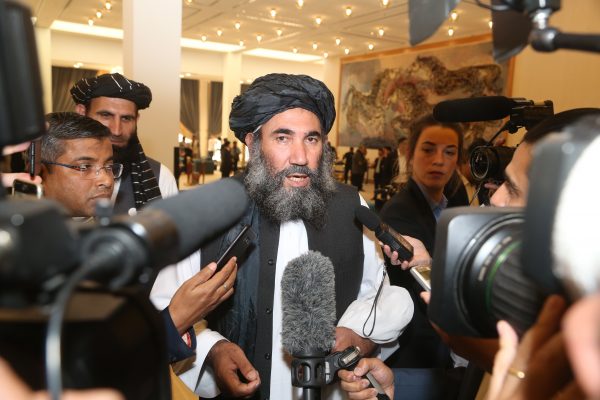As the Taliban and Al-Qaeda have cooperated and coordinated efforts, it is wrongly to assume the Taliban as a force in Afghanistan, therefore, that is able to create a strong hand in the country and foil other Islamic terrorist organizations there.
It is misperception the Taliban have no ambition outside Afghanistan given the ongoing links with al-Qaeda. The fact that a third of the Taliban militaries are foreigners enhances Taliban’s mobility and ability to operate outside Afghanistan.
The UN report confirms the Taliban do not meet the basic conditions of the agreement: to cut ties with international groups – Al-Qaeda and Daesh.
Under the U.S.-Taliban peace agreement, the Taliban would cut ties with al-Qaeda and negotiate a peace deal with the Afghan government in return for the withdrawal of U.S. forces by May 2021. As such, U.S. officials in the past have said that a complete withdrawal of U.S. troops in Afghanistan will happen only if the Taliban meet all the conditions set by the agreement.
The Afghan government says that the killing of a high-ranking al-Qaeda leader Abu Muhsin al-Masri (also known as Husam Abd al-Ra’uf) in a Taliban safe haven in eastern Afghanistan province of Ghazni in October is an indication that the Taliban are still keeping ties with al-Qaeda. According to a spokesperson for the Afghan government Siddeq Siddiqqui, the Taliban still provide a safe environment for these terrorist groups to operate.
He claims that the Taliban harbor of al-Qaeda operatives is contrary to Taliban’s commitment to cut ties with foreign terrorist groups. The U.S.-Taliban deal in February required the Taliban to stop supporting terrorist groups such as Islamic State (IS) and al-Qaeda.
The country’s National Directorate of Intelligence (NDS) said al-Masri was a close aide to al-Qaeda leader Ayman al-Zawahiri and had supported the Taliban and Haqqani Network for years. His living in Ghazni was sheltered by Taliban, who gave him armed protection.
In September, U.S. Secretary of State Mike Pompeo said that there were fewer than 200 al-Qaeda operatives in Afghanistan.
According to the UN report, the senior leadership of Al-Qaeda remains present in Afghanistan, as well as hundreds of armed Al-Qaeda operatives in the Indian Subcontinent, and groups of foreign terrorist fighters aligned with the Taliban. A number of significant Al-Qaeda figures were killed in Afghanistan during the reporting period. Relations between the Taliban, especially the Haqqani Network, and Al-Qaeda remain close, based on friendship, a history of shared struggle, ideological sympathy and intermarriage. The Taliban regularly consulted with Al-Qaeda during negotiations with the United States and offered guarantees that it would honor their historical ties.
Al-Qaeda pledged allegiance to the Taliban’s leadership when it took power in Afghanistan in the late 1990s. According to the U.N., the ties have remained unbroken even after the fall of the Taliban regime in 2001.
In 2006, the Taliban and Al-Qaeda announced they established their own Islamic state, located in the north-west of Pakistan not far from the border with Afghanistan. Those are the provinces of North and South Waziristan, mostly controlled by the terrorists. It was called the Islamic State of Waziristan back then.
In August 2015, Ayman al-Zawahiri, al’Qaeda leader, swore allegiance to new Taliban leader in Afghanistan, Mullah Mohammad Akhtar Mansour.
Al-Qaeda leader Ayman al-Zawahiri is also repeatedly sending his representatives as mediators to settle difficulties and conflicts between various Taliban factions (especially among the leaders).
Al-Qaeda regularly uses its fundraising network in the Gulf countries to raise financial aid for the Taliban jihad in Afghanistan. Al-Qaeda and the Taliban held meetings over the course of 2019 and in early 2020 to discuss cooperation related to operational planning, training and the provision by the Taliban of safe havens for Al-Qaeda members inside Afghanistan. Al-Qaeda is covertly active in 12 Afghan provinces: Badakhshan, Ghazni, Helmand, Khost, Kunar, Kunduz, Logar, Nangarhar, Nimruz, Nuristan, Paktiya and Zabul.
Al-Qaeda leadership detailed meetings with the Taliban have included Ahmad Ahmad al-Qatari (not listed), Sheikh Abdul Rahman, Hassan Mesri (aka Sbdul Rauf) and Abu Osman, a Saudi Arabian member of Al-Qaida.
The UN report claims, that ISIL-K in Afghanistan remains capable of mounting attacks in various parts of the country, including Kabul, but some of those claimed may have arisen wholly or partly from a tactical accommodation with the Haqqani Network.

Haqqani Network
The Haqqani Network is an official, semi-autonomous component of the Afghan Taliban and an ally of AQ. It was founded by Jalaluddin Haqqani, a leading member of the Al Qaeda and Islamic State Affiliates in Afghanistan anti-Soviet jihad (1979-1989) who became a prominent Taliban official and eventually a key leader in the post- 2001 insurgency. The Taliban confirmed his death from natural causes in September 2018.
The group’s current leader is Jalaluddin’s son, Sirajuddin Haqqani, who has also served as the deputy leader of the Taliban since 2015. Sirajuddin’s appointment to lead the network likely strengthened cooperation between the Taliban and AQ, with which the Haqqanis have close ties going back to the anti-Soviet jihad; Zawahiri reportedly met with senior Haqqani leaders in February 2020. The May 2020 U.N. report suggests that the Haqqanis may also have reached a “tactical accommodation” with ISKP.
The Haqqanis are blamed for some of the deadliest attacks of the war in Afghanistan. In 2012, the year the Haqqani Network was designated as an FTO, then-Chair of the Senate Select Committee on Intelligence Senator Dianne Feinstein claimed the network was responsible for the death or injury of over 1,300 U.S. troops. The year before, then- Chairman of the Joint Chiefs of Staff Admiral Mike Mullen described the Haqqanis in 2011 as a “veritable arm” of Pakistan’s Inter-Services Intelligence agency.
Thus, despite no evidences of mil cooperation between ISIL-K and Taliban, it is possible that these forces and Al-Qaeda can coordinate their position on Afghanistan and negotiations. Moreover, Taliban, ISIL-K and Al-Qaeda can have horizontal links and potentially may cooperate on tribal and clan’s level.
In 2014 the Pakistani Taliban has declared its support to the Islamic State of Iraq and Syria (ISIS) radical group and ordered its fighters across the region to help the Middle Eastern extremists. ISIS activists have been spotted in the Pakistani city of Peshawar distributing pamphlets praising the group. This confirms the assumption the confrontation between the Taliban and ISIL-K in Afghanistan is ad hoc, and rises from the fact the group does not want to share the sources of income in Afghanistan. Meanwhile, ideologically, there are no disagreements between the Taliban and ISIL-K, so they are likely to cooperate if the financial interests for both groups are observed and an autocratic leader appears. The May 2020 U.N. report suggests that the Haqqanis, as a part of Taliban forces may have reached a “tactical accommodation” with ISKP.
The Taliban are likely to fuel their assertiveness as time goes by and expand beyond Afghanistan through cooperation with Al-Qaeda or ISIL-K.
It is likely, that Al-Qaeda plays a role of international connector for Taliban through its network of mentors and advisers who are embedded with the Taliban, providing advice, guidance and financial support. So, Al-Qaeda can be strategic senior partner, having no significant boots on the ground in Afghanistan, not gaining the legal political power in the region, but using Talibs as battle force and influence instrument. For Taliban, the cooperation with Al-Qaeda is the issue of prestige, power and links with radical and terrorist groups worldwide.
According to the diagram, key Al-Qaeda concentration areas are the same with Haqqani Network operation domain.

In May, 2019 Al Qaeda’s As Sahab media released a video advertising the group’s role in an ambush on an Afghan National Army (ANA) convoy in Paktika province. The video was released to bring into focus its role in joint military activity with the Taliban. The video also shows al-Qaeda leaders Osama bin Laden and Ayman al-Zawahiri and Taliban leaders Mullah Omar and Mullah Mansour. The presence of these people means the video was recorded before 2011. The video release in 2019 can be viewed as an attempt by al Qaeda to show its role in Afghanistan and strengthen its hand in the region. This scenario seems good enough only provided the AQIS presence in Afghanistan is advantageous to the Taliban and meets their interests.
But according to the Pentagon report, prepared for the US Congress in 2018, “AQIS (Al-Qaeda in the Indian Subcontinent) routinely supports and works with low-level Taliban members in its efforts to undermine the Afghan government, and maintains an enduring interest in attacking US forces and Western targets in the region.
Last month, the Taliban launched an offensive in Helmand to take the provincial capital.
While the deadly attack elevated tensions between the Afghan government and the Taliban to a new level, U.S. envoy Khalilzad has encouraged both sides to focus on the “common enemy,” ISKP.
However, facts of continuing cooperation between the Taliban and Al-Qaeda give reasons to doubt in Washington‘s plan to deal with Talibs.
Russians and the Taliban are working together, so there are no reasons to trust Talibs and expect their distancing from the radical groups, like AQ.
The increase in activity by al’Qaeda in Afghanistan after 2014 and that by Moscow in backing the Taliban deepens suspicion of possible Russian connection in logistics, financial and informational support to groups in the region.
Dr. Ayman al-Zawahiri, bin Laden’s right-hand man and the leader of the global jihad movement since bin Laden’s death in May 2011, spent almost a half-year in the mid-1990s in the custody of Russian intelligence. It is admitted by both sides and is a matter of public record.
Just as significant, Zawahiri’s Russian sojourn occurred at a pivotal point in the development of Al-Qaeda; the shift in strategy, resulting in attacks on the United States. At about 4 am on December 1, 1996, Zawahiri was detained in southern Russia while attempting to enter Chechnya. Accompanying the doctor in the van were two other radicals from Egypt and a Chechen guide.
The Egyptians, wanted men in their home country and several others, were traveling under aliases; Zawahiri was “Abdullah Imam Mohammed Amin,” according to the Sudanese passport he carried, which had stamps from many countries – among them Yemen, Malaysia, Singapore – he had visited in the 20 months before his arrest.
Zawahiri’s two Egyptian companions were veteran mujahidin from Egyptian Islamic Jihad (EIJ), the group Zawahiri had been associated with for years and had headed since 1993. Ahmad Salama Mabruk ran EIJ’s activities in Azerbaijan under the cover of a trading firm called Bavari-C, while Mahmud Hisham al-Hennawi (also known as Abu Sahl, killed in 2005) had extensive experience on jihad in parts of Asia.
The three Arabs were extensively interrogated by the Russian Federal Security Service (FSB), which noted the inmates’ religious fervor, and the surprising support they received from Islamic organizations around the Muslim world. After Zawahiri‘s arrest, 26 imams signed an appeal for the release of the three “businessmen”; others denounced Russian authorities of doing “the devil’s work” by detaining the hard-praying Muslims.
The FSB had ample reason to doubt the Arabs’ cover story. The items confiscated from the trio included details about bank accounts in Hong Kong, mainland China, Malaysia, and the U.S. (specifically St. Louis), plus substantial cash in seven currencies. Their laptop computer was seized and subjected to forensic analysis by the FSB.
“Mr. Amin,” whose Sudanese passport depicted a Western- dressed middle-aged man with a very short beard, arrived in Russia possessing two forged graduation certificates from Cairo University’s medical faculty, with differing dates. FSB investigation of Bavari-C, the EIJ front company in Baku, quickly determined that no such firm existed in Azerbaijan.
When the case finally went to court in April 1997, the judge rejected the prosecution’s request for a three-year sentence and gave all three men six months each; almost immediately they were released, time served. So Zawahiri spent half a year in close contact with representatives of Russian intelligence while in their custody.
The FSB returned the men their possessions, including the cash, communications gear, and the laptop. After their release, Zawahiri spent ten days clandestinely meeting with Islamists in Dagestan, which presumably had been the original purpose of his trip to the region. Shortly thereafter, he headed for Afghanistan to establish his fateful alliance with bin Laden, which was cemented in the mid-February 1998 announcement of a new partnership between the men and their organizations in a Global Islamic Front for Jihad. Significantly, these contacts led to a change in Zawahiri’s political orientation. Long talks with Russian intelligence officers “forced a critical change in his lethal planning.

Zawahiri was one of the world’s most wanted terrorists in 1996, having played a leading role in the assassination of President Anwar Sadat in 1981. Dissident FSB Colonel Aleksandr Litvinenko made explosive claims in a 2005 interview, when he asserted that Zawahiri actually underwent training by the FSB in Dagestan during his half-year in Russian custody, and that Russian intelligence then dispatched him to Afghanistan to become bin Laden’s right-hand man. “I worked in the same division [of the FSB],” he stated, “I have grounds to assert that al-Zawahiri is not the only link between the FSB and al-Qaeda. (Krystyna Kurczab-Redlich, “Drogi terroryzmu – Kto wspiera napastnicy?,”Rzeczpospolita (Warsaw), 16 July 2005.)





